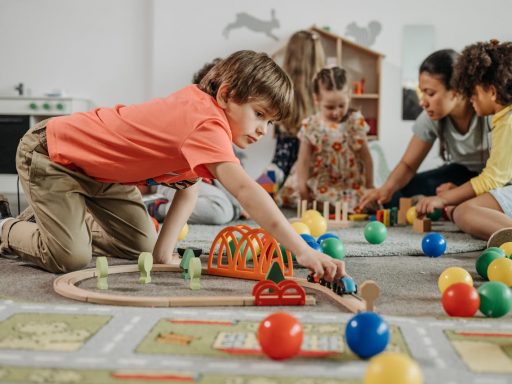According to one study, our attention span is shorter than that of a goldfish.
For the teachers struggling to keep up with virtual learning since social distancing began, that may not come as a surprise. Virtual classrooms can be tricky to navigate, and it’s hard to keep the reins when you yourself are still striving to learn the ropes. When you need every tip you can get, here are the five distanced learning strategies that matter.
1. Stay Organized
Just as you’d organize your physical classroom to keep students focused, it’s important to keep your virtual classroom orderly as well.
This includes basic strategies like getting rid of visual clutter in your assignments, like fonts that are hard to read, lengthy walls of text, or images that aren’t necessary. It also means de-cluttering the background of your video feed before you begin teaching.
However, organization should extend to all of your teaching. Have a single place where students can find their tasks and assignments, summarize the lesson’s objectives before instructing, and make sure students know where and how to submit their virtual work.
2. Get Feedback
Though many teachers have a love-hate relationship when it comes to classroom observation, the best educators actively seek out constructive feedback. This is more true than ever when many are forced to learn to teach virtually for the first time!
This observation can come from another teacher or administrator jumping into a Zoom call, or from dedicated classroom observation technology.
Don’t forget to ask for student feedback as well! Ask students what’s working well and what they wish was different, and remind them that you, too, are working to adjust to virtual classrooms.
3. Break It Down
Research shows that students need more mental effort to process online materials than they’d need for in-person work. That means your class may need a little extra help with the key concepts of your lessons.
Break down your lessons into more digestible chunks, covering one or two ideas in each and allowing students to process the information little by little. This helps you keep their attention, and it gives you a natural opportunity to break to check comprehension.
4. Check for Comprehension
On that note, it’s important to make sure your students understand even those bite-sized pieces. With the technology available to you, it’s easy to opt for low-stakes polls or informal assessments that let you gauge how well your class as a whole has grasped major conflicts. Don’t hesitate to reach for tried-and-true strategies like online quizzes or class Jeopardy games!
5. Foster Connections
One of the components missing in many virtual classrooms is the type of connection that comes naturally when we sit down together in person. Group work and casual chatting get lost in the shuffle of Zoom calls and remote assignments, but these things are critical for student learning.
Try making time to chat with students before your Zoom call begins. Use breakout rooms for group work, ask discussion or journal questions, and encourage students to speak up (or talk to each other, as appropriate).
Make the Most of Virtual Learning
While it isn’t what most teachers are used to, virtual learning can be a great way to teach students—as long as you follow these classroom tips. Bringing these strategies into your classroom may take some time and effort, but they may make it easier for you to navigate the chaotic waters of virtual schooling, both now and as the pandemic continues.
Want more of the helpful tips you need to know? Check out our other posts for more info to jump-start your virtual classroom!






